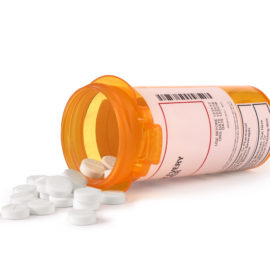What drug is called tina? There is not a new drug called tina. Rather, the tina drug name is used within the LGBTQ community to refer to crystal methamphetamine (crystal meth).
So, if you were curious about what is tina slang for, this guide to the drug called tina will highlight the following issues:
- What drug is tina?
- What is tina addiction?
- Is there other slang for tina?
- How to connect with meth addiction treatment in California.
Why is Meth Called Tina?
The term tina is used as slang for crystal meth within the LGBTQ community. The origin of this nickname is not definitively documented, but it is believed to have arisen for several reasons:
- Cultural adoption: Slang often spreads within subcultures, and the LGBTQ community might have adopted tina as a way to distinguish their terminology from mainstream drug-related slang.
- Code language: Slang can serve as a form of code language, allowing community members to communicate about certain topics without attracting unwanted attention.
- Community identity: Developing unique terminology can create a sense of community identity and belonging, reinforcing connections among group members.
Slang terms for drugs can vary in different communities and contexts. The use of tina to refer to crystal meth is specific to certain groups and might not be universally recognized.

Side Effects of Crystal Meth
Crystal methamphetamine, commonly known as crystal meth, is a highly potent and addictive stimulant that can have profound and detrimental effects on the body and mind. Its use can lead to a wide range of short-term and long-term side effects:
Short-term side effects
- Euphoria: Crystal meth can induce intense feelings of euphoria, energy, and increased confidence.
- Increased alertness: Those using tina may experience heightened alertness, increased focus, and reduced need for sleep.
- Decreased appetite: Crystal meth can suppress appetite, leading to rapid weight loss.
- Increased heart rate: Stimulant effects of crystal meth can cause an elevated heart rate and increased blood pressure.
- Dilated pupils: Use of crystal meth can lead to dilated pupils.
- Agitation and irritability: Many people exhibit restlessness, irritability, and even aggressive behavior after using tina.
- Insomnia: Crystal meth’s stimulating effects can lead to difficulty falling asleep and staying asleep.
- Nausea and vomiting: Some people may experience nausea and vomiting.
- Hyperactivity: Hyperactive behavior, rapid speech, and excessive movement are common side effects of crystal methamphetamine.
Long-term side effects
- Addiction: Crystal meth is highly addictive, and long-term use can lead to physical and psychological dependence.
- Cognitive impairment: Prolonged use of meth can cause cognitive deficits, including memory loss, impaired judgment, and difficulty concentrating.
- Dental issues: The meth mouth phenomenon is characterized by severe dental problems, including tooth decay, gum disease, and tooth loss.
- Skin complaints: Those who abuse meth may experience skin sores, acne, and picking behavior due to increased scratching.
- Weight loss: Chronic use of tina can lead to severe weight loss and malnutrition.
- Mental health issues: Crystal meth use is associated with anxiety, paranoia, hallucinations, and even psychosis.
- Cardiovascular problems: Long-term tina use can result in heart problems, including heart attack and stroke.
- Respiratory issues: Smoking crystal meth can damage the lungs and lead to respiratory problems.
- Social and legal consequences: Crystal meth use can cause strained relationships, loss of employment, legal troubles, and isolation from loved ones.
- Overdose: Taking large amounts of crystal meth can lead to overdose, which can cause hyperthermia, seizures, cardiac arrest, and death.
The severity of these side effects can vary depending on factors such as dose, frequency of use, individual physiology, and presence of other health conditions. The risks associated with crystal meth use emphasize the importance of prevention, intervention, and seeking professional help for those struggling with addiction.
Treatment for Tina (Crystal Meth) Addiction
Overcoming addiction to the tina drug requires a comprehensive and individualized treatment approach. Due to the intense effects and addictive nature of the drug, seeking professional help is essential. Effective treatment strategies for crystal meth addiction may include:
Medical detoxification
Under medical supervision, individuals can safely manage the withdrawal symptoms associated with crystal meth cessation. Medications and supportive care may be provided to ease discomfort.
Behavioral therapies
CBT (cognitive behavioral therapy), MET (motivational enhancement therapy), and CM (contingency management) can help address the psychological factors driving addiction, develop coping skills, and prevent relapse.
Individual counseling
One-on-one counseling sessions can address underlying issues contributing to addiction, set achievable goals, and promote personal growth.
Group therapy
Participating in group therapy provides a supportive environment where individuals can share experiences, gain insights, and receive encouragement from peers.
Family therapy
Engaging family members in therapy can help repair relationships, improve communication, and create a supportive recovery environment.
Holistic approaches
Incorporating mindfulness practices, yoga, art therapy, and physical exercise can contribute to overall well-being during recovery.
Support groups
Joining support groups, such as 12-step programs like NA (Narcotics Anonymous), offers ongoing support and accountability.
Dual diagnosis treatment
Addressing co-occurring mental health disorders alongside addiction is vital for comprehensive recovery from dual diagnosis.
Relapse prevention strategies
Learning to recognize triggers, develop coping skills, and formulate a relapse prevention plan will streamline the recovery journey.
Aftercare planning
Transitioning from formal treatment to daily life requires a well-structured aftercare plan, which may involve ongoing therapy, support groups, and regular check-ins with professionals.
MAT (medication-assisted treatment)
While there are currently no FDA-approved medications specifically for crystal meth addiction, some medications used for other substance use disorders may be considered under medical supervision.
Long-term engagement
Maintaining engagement in therapy, support groups, and positive lifestyle changes will help prevent relapse and sustain recovery.
Remember that overcoming crystal meth addiction is a challenging journey that requires commitment, patience, and professional guidance. Each person’s recovery journey is unique, and seeking treatment from addiction specialists and healthcare professionals is central to developing a personalized and effective recovery plan.

Get Treatment for Crystal Meth Addiction at Gratitude Lodge
Although crystal meth is intensely addictive, engaging with evidence-based treatment offers the smoothest and most effective pathway to ongoing recovery. We can help you achieve this at Gratitude Lodge. Access meth addiction treatment at our pet-friendly facilities located in Long Beach and Newport Beach, CA.
Most people withdrawing from meth find that supervised medical detoxification provides a setting most conducive to addressing physical dependence on methamphetamine (tina). After a week or so of detox, you can shift into ongoing treatment.
Our 30-day inpatient program is the most popular option for those battling meth addiction. Personalized treatment may include the following therapies:
- Psychotherapy
- Group therapy
- Individual therapy
- Family therapy
- Holistic therapy
- MAT (medication-assisted treatment)
- Aftercare planning and support
There is no need to let an addiction to tina define you or hold you back. Take action by calling Gratitude Lodge at 800-994-2184 and start living substance-free.




























